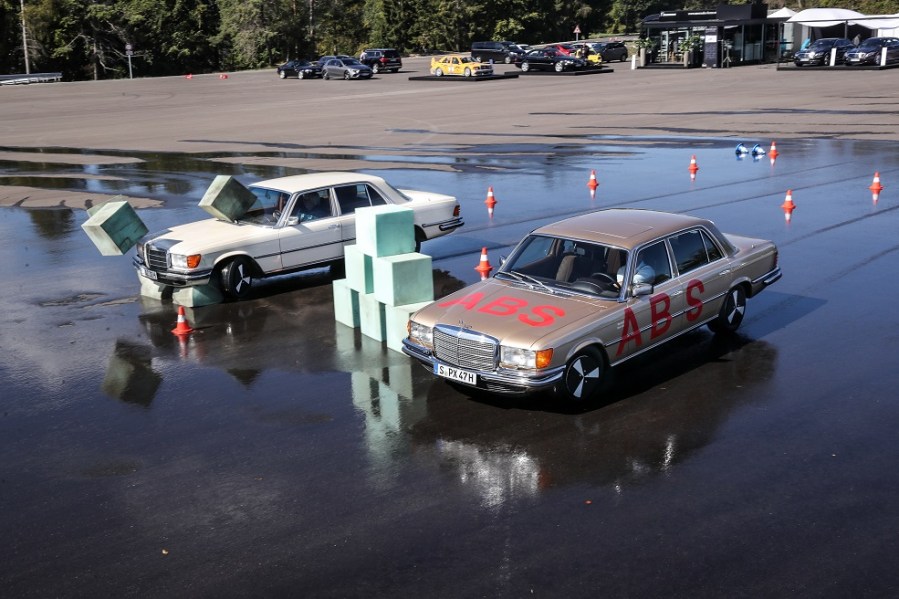We run through some of the milestones in automotive safety that have helped create today’s super safe modern cars.
Like many readers I suspect, we’re often hopping in and out of cars of massively varying ages, ranging from brand new company cars to prewar classics, plus the thousands of miles we cover in our own varied selection of project cars.
It’s something which tends to emphasise the progress we’ve made in car safety over the last half a century and there’s nothing that sharpens your driving skills quite as much as swapping your climate controlled, airbagged, ABS-braked, stability-controlled modern saloon for a drum-braked 1950s car on crossply tyres.
Just recently though, while attempting to count the number of airbags in a VW Golf while stuck in a traffic jam (I lost count eventually), it occurred to me that most of the really important safety breakthroughs happened so long ago that the cars which debuted them are now classics themselves. Here we identify some of the game changers.
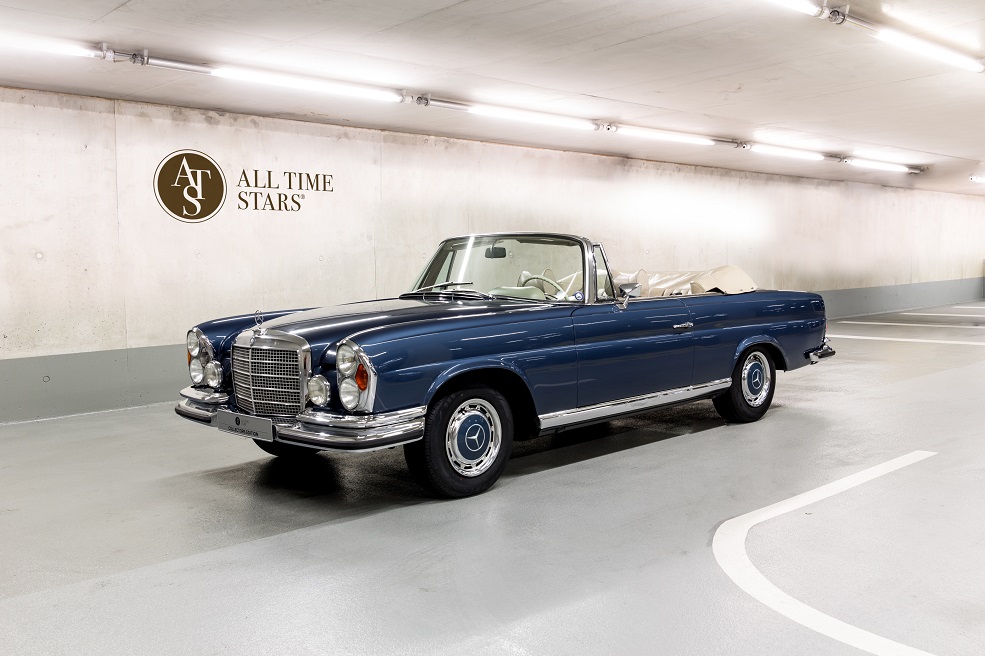
Collapsible column
We have the US market to thank for the collapsible steering column. In 1968 Federal Motor Vehicle Safety Standard No. 204 dictated the acceptable rearward movement of a vehicle’s steering wheel during a crash to be just five inches. Although some makers had already experimented with collapsible steering wheels using flexible spokes, to meet these requirements a collapsible steering column was required and the first was fitted by Chevrolet in 1967. The design used a honeycomb steel mesh which would simply collapse in sufficient impact. Here in Europe, Mercedes fitted an impact absorber between wheel and column and offered collapsible telescopic columns across the range from 1967.

Disc brakes
There’s a school of thought which suggests that active safety is far more important than passive safety in that it increases your chances of avoiding a crash in the first place. Clearly, increasing a car’s stopping power come firmly under that heading.
Rumour has it that it’s possible to order a Renault Twingo in some markets which is so basic it comes with front drum brakes but that’s very much the exception these days, with disc brakes having been common fare on mainstream cars since the early 1980s.
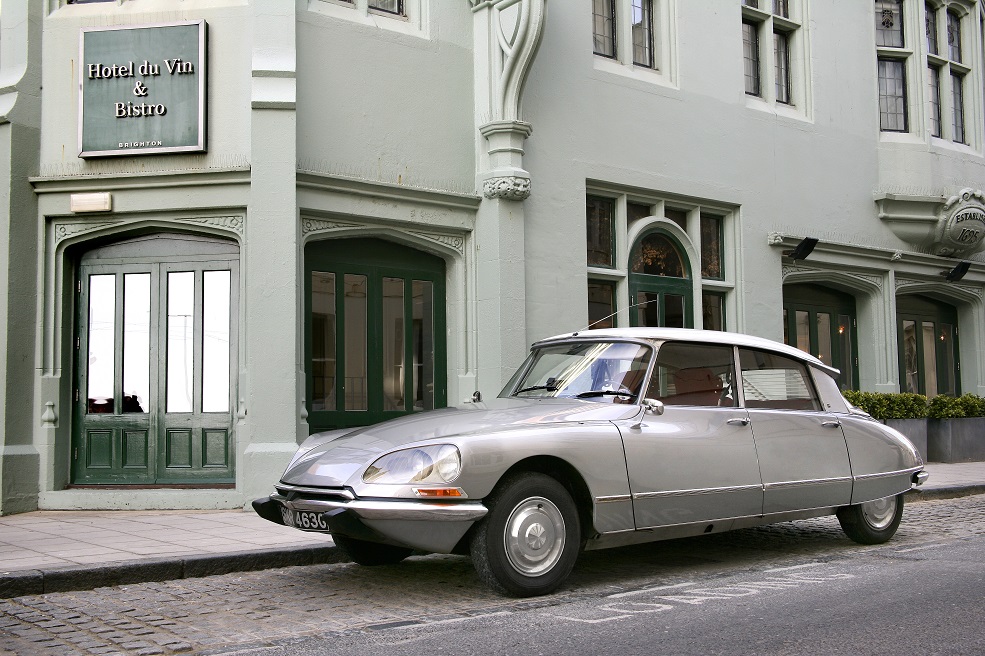
The idea of the disc brake was already an old one before Jaguar popularised it in the 1950s with its C-Type racers. Developed by Dunlop, the brakes helped Jaguar’s works cars to victory in the 1953 Le Mans race at a record average of over 100mph.
For this reason, the development of the disc brake on production cars tends to be associated with Jaguar and indeed, the Coventry maker’s racing success did much to popularise the concept as a desirable feature. In reality though, the first volume-production car to feature workable disc brakes as standard was the Citroën DS in 1955.
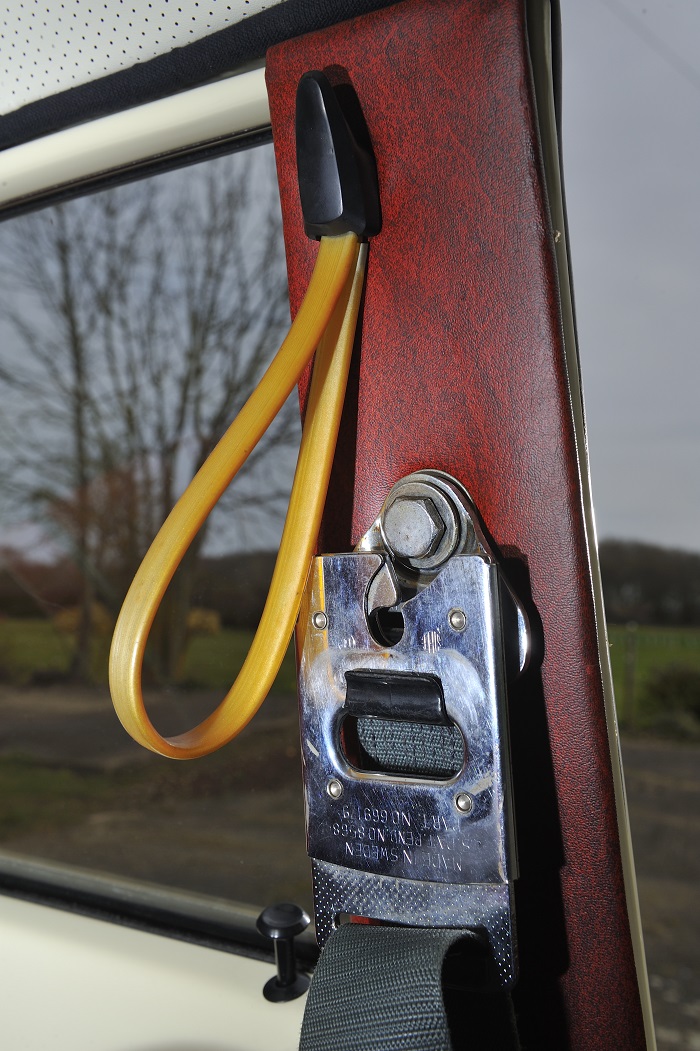
Seatbelts
Now this is an easy one to call: the seatbelt in its various forms has been around almost as long as the car itself but for the modern three-point belt we have Volvo engineer Nils Bohlin to thank.
Bohlin’s key breakthrough wasn’t so much the technology of the belt design but in the recognition of human nature: essentially, he realised that we’re too lazy to use any restraint system which is fiddly to put on. The result was his design which placed the buckle to one side, making it easy to put the belt on with a single hand. The convenience this afforded made it acceptable to drivers, while his three-point design ensured that the upper body was also properly restrained.
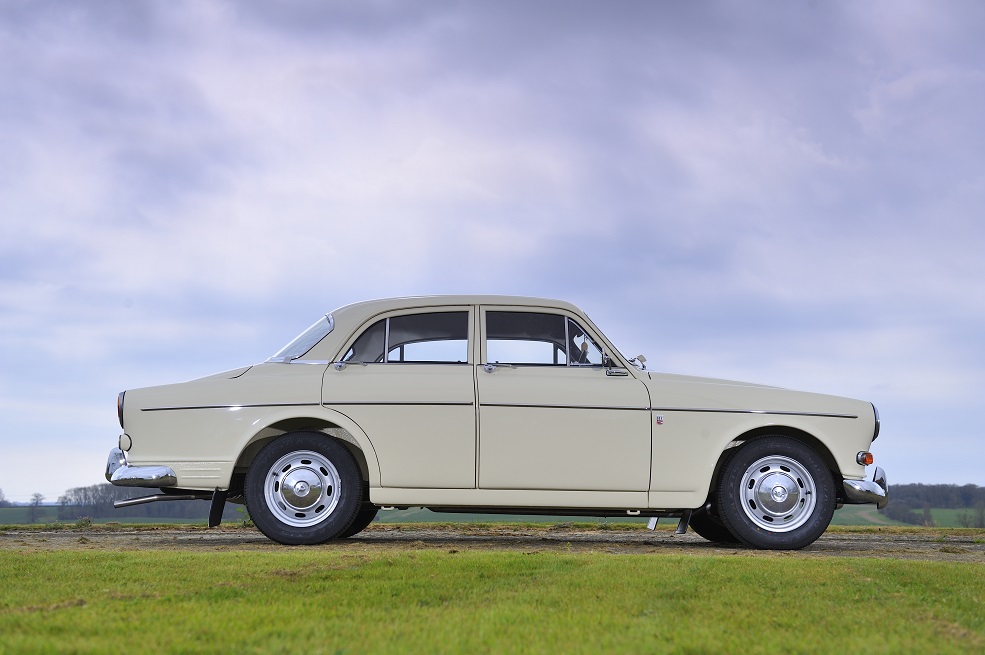
It’s to Volvo’s great credit that the patent was made available to other car makers and Bohlin’s design eventually became an industry standard.
The first car to feature his invention? The Volvo Amazon, which in 1959 had already become the first car to feature seatbelts of any kind as standard.
ABS
One of the great misconceptions surrounding ABS is that it enables you to stop more quickly. It doesn’t; what it does do is allow you to maintain steering control while braking heavily.
The idea is a simple one: when a wheel locks up and begins sliding, it has lost all grip and therefore can no longer offer any steering. By momentarily releasing braking pressure just before the wheel stops rotating, an anti-lock braking system can prevent a wheel locking and therefore can ensure that steering control is maintained.

The first anti-lock braking systems were developed for aircraft and were mechanical in operation, using centrifugal pressure to control braking pressure. One of the most successful was the Dunlop Maxaret system which was later adapted for automotive use by Jensen on its ground-breaking FF.
For this reason, it’s the FF which can be regarded as the first car with anti-lock brakes, but the modern generation of electronic anti-lock systems known as ABS – referred to in English as Anti-lock Braking System but more properly an acronym for the German Anti-Blockier Systeme – was developed by Bosch. It was first fitted to the 1978 Mercedes S-Class, but the first car to offer ABS as standard was the Ford Granada in 1985. Many readers will remember the advert where the Ford driver simultaneously braked and swerved around an errant tractor on the brow of a hill.

Airbags
The idea of using an inflatable bag to protect occupants during a crash was first tried in the 1950s, early systems using compressed air linked to a mechanical valve in the front bumper. Later research showed that compressed air couldn’t inflate the bag fast enough for it to be useful, so researchers turned to gas-powered solutions, with an explosive charge used to produce the gas.
By the mid 1970s, General Motors was offering airbag equipped cars, but the first car on the European market to be offered with an airbag as an option was the Mercedes W126 S-Class in 1980. Interestingly, the European standards require a smaller bag than the US standards, as they are based on the occupants also wearing seatbelts.
Surprisingly perhaps, Audi was late to the airbag party as it had been relying on its alternative system called Procon-Ten (Programmed Contraction and Tension) which relied on a steel cable looped around the engine and connected to the belts and steering column. In the event of a crash, the longitudinal engine was pushed backwards, pulling the wheel forwards and away from the driver. As this would reduce the benefit of airbags, it was discontinued when they became the standard.
In 1992, one of the very first airbag-equipped cars was bought back from its customer by Mercedes and crash tested. After 11 years, that early airbag still functioned perfectly.
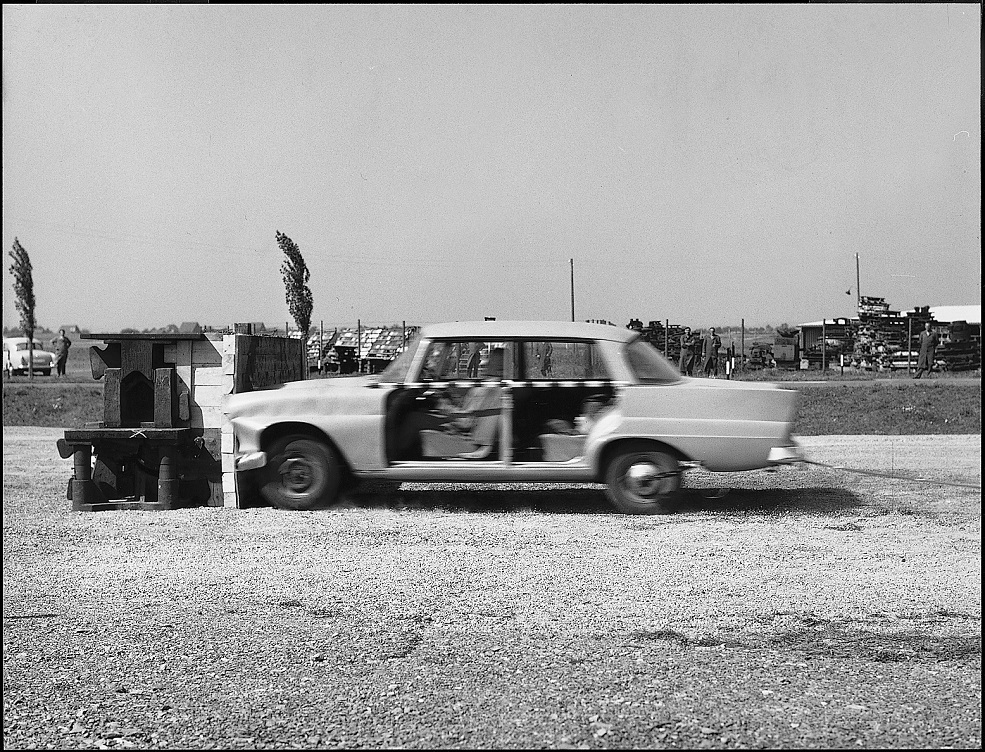
Crumple zones
Sometimes regarded as a life-saver on a par with the seatbelt, the idea of a car being designed to absorb energy by controlled deformation was first proposed in 1951 by Mercedes-Benz engineer Béla Barényi. The idea of absorbing the kinetic energy of a car crash was what we would later come to refer to as the ‘crumple zone’ and Barényi’s ideas were put into practice in the W111 Mercedes models debuted in 1959.
Safety steering
When the Audi 80 was unveiled in 1972, it was a pleasant but in many ways unremarkable car. Using the front-wheel drive know-how VW-Audi had inherited with its takeover of NSU, it was a mid-sized saloon car which was produced in almost identical form as the VW Passat.
One thing it did pioneer though was a steering geometry which was set up with what is called ‘negative roll radius’ or ‘negative scrub radius’. The term relates to the point at which an imaginary line drawn through the upper and lower pivots of the steering would meet the ground and if it falls outside the centre line of the tyre it’s known as a negative offset. This encourages a self-centring steering action and also means that the effects on straight-line stability of differential braking forces on either side are minimised.
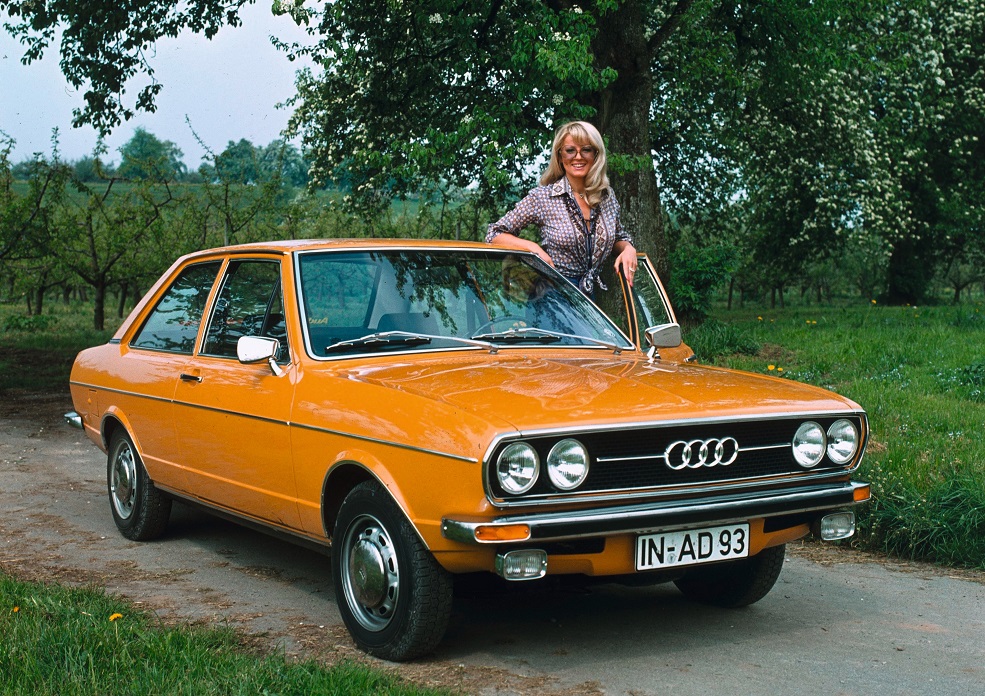
The reason VW/Audi introduced the design in the first place was linked to another crucial safety development: the split braking system. Designed to retain braking power in the event of a system failure, the system was split diagonally, meaning that in the event of brake failure one front and one diagonally opposite rear wheel would still be braked. Without the negative steering geometry offset, this would make the car horribly unstable, hence its introduction. it also has other benefits –for example, when a tyre blows out.

